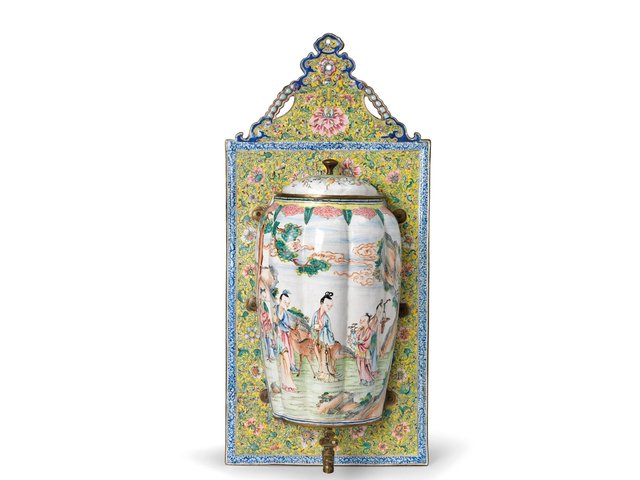These three hardback volumes in a stiff slip case inhabit the luxury end of the publishing market. Clean printing on high-grade paper is matched by meticulous editing, a full cohort of intellectual appendices and professional images reproduced in excellent quality, though there is no index. The Western-language bibliography will stand in its own right as a valuable reference source.
The books catalogue a private collection held in Brazil, called “RA”, the name the collector has adopted to designate his collection in the public arena, without wishing to link his own name with it.
The collection is described and analysed in great detail in the three volumes. The first covers 191 objects destined for both Chinese and overseas markets, ranging in date from the third to 18th centuries; the second comprises entries on 214 pieces with Western shapes, decoration and over-decoration added in Europe, chiefly of 18th-century date; and the third catalogues 140 items of Chinese armorial export porcelain, the larger number bearing Portuguese coats of arms.
The author has been investigating the collection for 11 years and her careful, painstaking research is clear to see. The most innovative and exhaustive detail is provided in volume three, where Pinto de Matos uses archival and historical evidence to round out her descriptions. This volume marks a high point in the study of export porcelain as an index of trade. To give but one example, entry number 497 concerns a small porcelain dish decorated in polychrome enamels, made between 1741 and 1752. Although attractively coloured, the piece might attract only a cursory glance, unless one knew that its rather insignificant arms belonged to D. José Maria da Fonseca e Évora. A full biography of the gentleman charts his career from studentship at the University of Coimbra to priesthood in Rome, culminating in the offer of four different bishoprics and membership of the Roman senate.
Volume two takes up the story of porcelain manufactured in China to Western requirements. In the main, the author’s approach is that of an exacting cataloguer, who seeks to describe but not to explicate. Many of the objects illustrated have published parallels, the particulars of which she refines and adds detail to, in a cumulative process.
If there is a shortcoming in the publication, it comes with volume one. The artefacts, although individually impressive, do not perhaps add up to a significant whole. The author maximises information where there is a Portuguese connection, such as a ewer and bowl decorated with armillary spheres (numbers 57 and 62) and a bowl with mis-written Portuguese inscription (number 63). But for objects pertaining to Chinese domestic use, one misses the inclusion of Chinese reference sources that could help to locate the objects. This is, however, a minor insufficiency in a great work. As Luisa Vinhais and Jorge Welsh explain in their publisher’s foreword, the collector’s desire was “to publish an innovative, scholarly work that will inspire and instruct all those who are interested in the study of ceramics”, and in this they have been successful.
The RA Collection of Chinese Ceramics: a Collector’s Vision
Maria Antónia Pinto de Matos
Jorge Welsh Books, three volumes, 1,204 pp, £900 (hb), 500 copies in English, 400 in Portuguese
Originally appeared in The Art Newspaper as 'The collection, not the collector'


